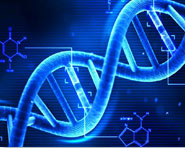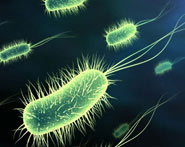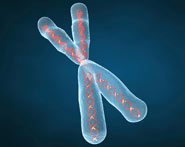


 النبات
النبات
 الحيوان
الحيوان
 الأحياء المجهرية
الأحياء المجهرية
 علم الأمراض
علم الأمراض
 التقانة الإحيائية
التقانة الإحيائية
 التقنية الحيوية المكروبية
التقنية الحيوية المكروبية
 التقنية الحياتية النانوية
التقنية الحياتية النانوية
 علم الأجنة
علم الأجنة
 الأحياء الجزيئي
الأحياء الجزيئي
 علم وظائف الأعضاء
علم وظائف الأعضاء
 الغدد
الغدد
 المضادات الحيوية
المضادات الحيوية|
Read More
Date: 23-3-2021
Date: 30-11-2015
Date: 23-12-2015
|
Base-Pair Substitution
These mutations of DNA affect only one base pair at a time, possibly producing either amino acid substitutions or chain termination codons in a gene (see Genetic Code). Amber (UAG), ochre ) UAA), and UGA codons will all terminate polypeptide synthesis. Amino acid substitutions often produce leaky and/or temperature-sensitive mutations, whereas chain-terminating mutants are usually nonleaky. It has been suggested that there is an important difference between the consequences of frameshift and base-pair substitution mutations in diploid organisms. Frameshifts are often recessive, whereas base-pair substitution mutations may exert partial dominance (1).
Freese (2) divided base-pair substitutions into two classes, transitions and transversions. Transitions are mutations in which the purine–pyrimidine orientation is conserved; that is, a purine is replaced by another purine, a pyrimidine by another pyrimidine. The eight possible transversion mutations in double-stranded DNA are: A.T ↔ T.A; T.A ↔ G.C; G.C ↔ C.G; C.G ↔ A.T. Transition mutations have the purine–pyrimidine orientation conserved, as in A.T ↔ G.C or C.G ↔ T.A.
Transitional mutations have been traditionally considered to be due to tautomerism of nucleotides. All of the four common DNA bases can exist in tautomeric forms, of which the biologically most interesting involve keto–enol pairs for thymine and guanine and amino–imino pairs for cytosine and adenine. The tautomer, although obeying the usual purine–pyrimidine pairing rules, is capable of hydrogen bonding with a base that is normally noncomplementary. If this occurs and is not repaired, it will lead directly to base-pair substitution mutagenesis in subsequent cell generations. Some base analogues are highly mutagenic, presumably through direct incorporation into DNA through mispairing with a normal base in a tautomeric form. Some DNA alkylating chemicals may be mutagenic through adding an alkyl group onto a normal nucleotide base, thereby affecting its base-pairing properties in subsequent rounds of replication (see Dimethyl Sulfate (DMS)). Such premutagenic events will be fixed at a low level during subsequent rounds of replication, typically leading to transition mutations of various types.
References
1.C. Wills (1968) Proc. Natl. Acad. Sci. USA 61, 937–944.
2. E. Freese (1959) Brookhaven Symp. Biol. 12, 63–73.



|
|
|
|
حقن الذهب في العين.. تقنية جديدة للحفاظ على البصر ؟!
|
|
|
|
|
|
|
علي بابا تطلق نماذج "Qwen" الجديدة في أحدث اختراق صيني لمجال الذكاء الاصطناعي مفتوح المصدر
|
|
|
|
|
|
|
ضمن برنامج تأهيل المنتسبين الجدد قسم الشؤون الدينية يقدم محاضرات فقهية وعقائدية لنحو 130 منتسبًا
|
|
|